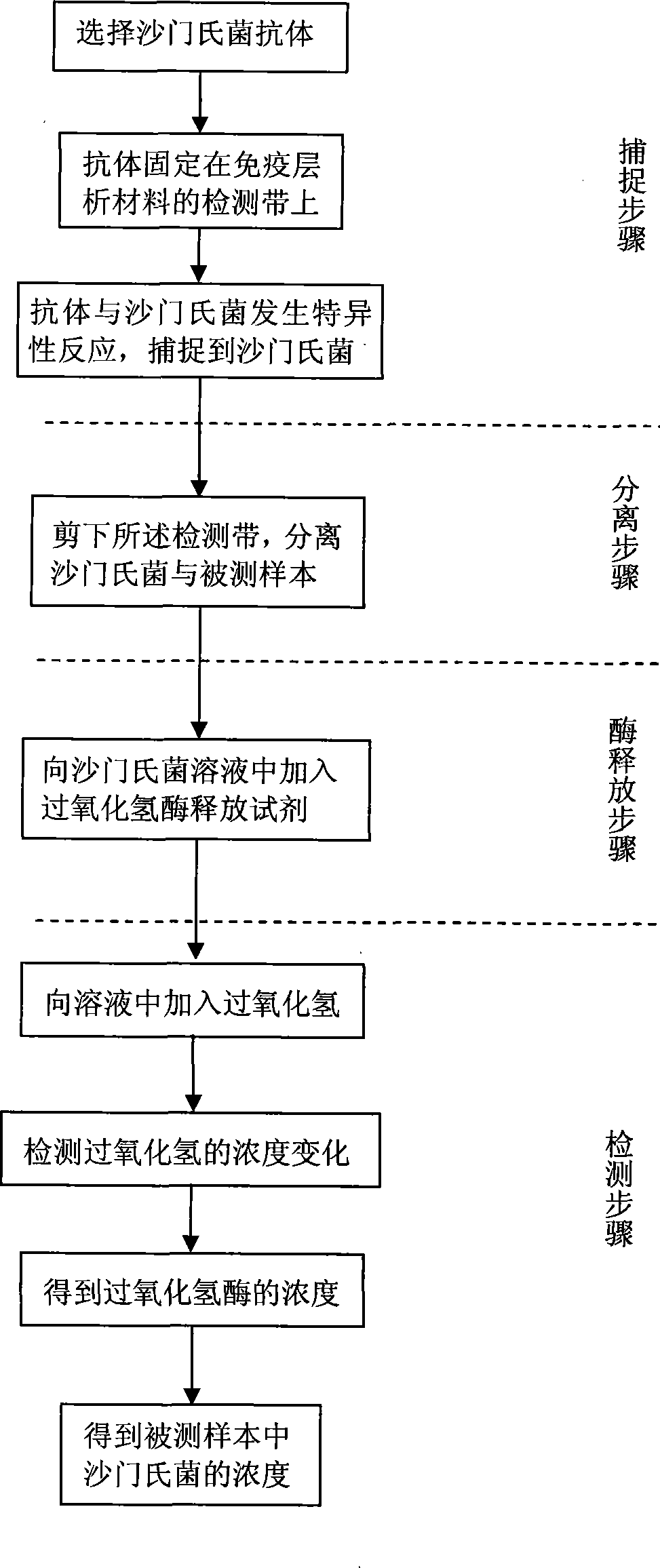Method for detecting particular microorganism
A detection method and microbial technology, applied in the direction of electrochemical variables of materials, analytical materials, instruments, etc., can solve the problems of complexity, long detection time, and low detection sensitivity, so as to reduce the detection cost, increase the complexity, and simplify the detection process. Effect
- Summary
- Abstract
- Description
- Claims
- Application Information
AI Technical Summary
Problems solved by technology
Method used
Image
Examples
Embodiment 1
[0041] A test method for specific microorganisms for the detection of pathogenic Escherichia coli O157:H7 in food, such as figure 2 As shown, the method includes the following steps:
[0042] a. Capture steps
[0043] selecting antibodies corresponding to Escherichia coli O157:H7, and immobilizing the antibodies on magnetic beads;
[0044]The magnetic beads can be prepared according to the method in the literature (eg Colloids Surf. A: Physicochem. Eng. Aspects 212 (2003) 219), or commercial products can be purchased. The antibodies used can be prepared by standard immunization methods, or commercial products can be purchased; the fixation of antibodies on magnetic beads also adopts the commonly used molecular biological fixation method; there are some commercial products (such as infectious diseases from the Chinese Center for Disease Control and Prevention Commodities provided by Preventive Controls) have E. coli O157:H7 antibodies immobilized on magnetic beads so that th...
Embodiment 2
[0058] A test method for specific microorganisms for the detection of Salmonella in food, such as image 3 As shown, the method includes the following steps:
[0059] a. Capture steps
[0060] Selecting the Salmonella antibody, and immobilizing the antibody on the detection band of the immunochromatographic material;
[0061] One end of the immunochromatographic material is placed in the tested sample solution, and the Salmonella in the tested sample reacts specifically with the antibody on the detection band of the immunochromatographic material, thereby capturing the Salmonella in the sample;
[0062] b. Separation step
[0063] Cut off the part of the detection band on the chromatographic sheet to ensure that the influence of the residue of the sample to be tested on the measurement is eliminated, and at the same time improve the accuracy of the test; put the part of the test band into 1 ml of pH7.2 phosphate buffer to complete The separation of Salmonella and tested sam...
PUM
 Login to View More
Login to View More Abstract
Description
Claims
Application Information
 Login to View More
Login to View More - R&D
- Intellectual Property
- Life Sciences
- Materials
- Tech Scout
- Unparalleled Data Quality
- Higher Quality Content
- 60% Fewer Hallucinations
Browse by: Latest US Patents, China's latest patents, Technical Efficacy Thesaurus, Application Domain, Technology Topic, Popular Technical Reports.
© 2025 PatSnap. All rights reserved.Legal|Privacy policy|Modern Slavery Act Transparency Statement|Sitemap|About US| Contact US: help@patsnap.com



